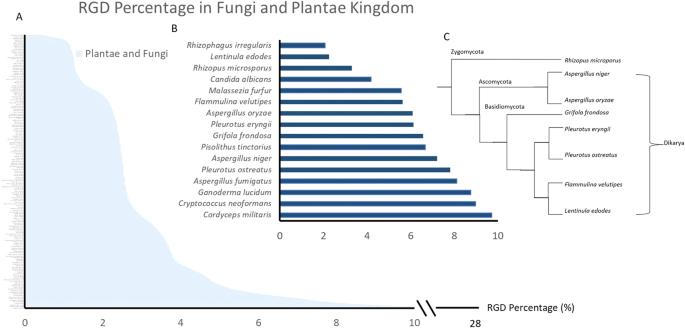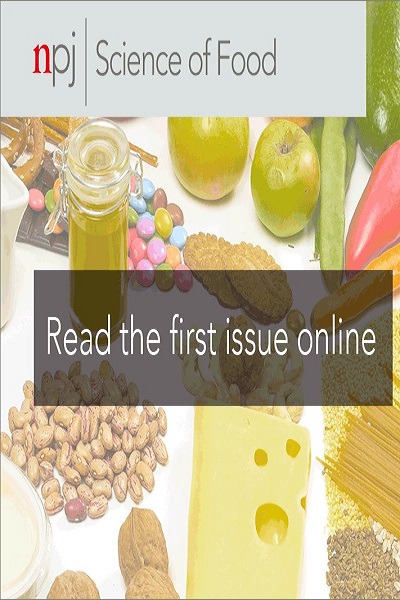Fungus-derived protein particles as cell-adhesive matrices for cell-cultivated food
IF 6.3
1区 农林科学
Q1 FOOD SCIENCE & TECHNOLOGY
引用次数: 0
Abstract
Cell-adhesive factors mediate adhesion of cells to substrates via peptide motifs such as the Arg–Gly–Asp (RGD) sequence. With the onset of sustainability issues, there is a pressing need to find alternatives to animal-derived cell-adhesive factors, especially for cell-cultivated food applications. In this paper, we show how data mining can be a powerful approach toward identifying fungal-derived cell-adhesive proteins and present a method to isolate and utilize these proteins as extracellular matrices (ECM) to support cell adhesion and culture in 3D. Screening of a protein database for fungal and plant proteins uncovered that ~5.5% of the unique reported proteins contain RGD sequences. A plot of fungi species vs RGD percentage revealed that 98% of the species exhibited an RGD percentage > = 1%. We observed the formation of protein particles in crude extracts isolated from basidiomycete fungi, which could be correlated to their stability towards particle aggregation at different temperatures. These protein particles were incorporated in 3D fiber matrices encapsulating mouse myoblast cells, showing a positive effect on cell alignment. We demonstrated a cell traction stress on the protein particles (from Flammulina velutipes) that was comparable to cells on fibronectin. A snapshot of the RGD-containing proteins in the fungal extracts was obtained by combining SDS-PAGE and mass spectrometry of the peptide fragments obtained by enzymatic cleavage. Therefore, a sustainable source of cell-adhesive proteins is widely available in the fungi kingdom. A method has been developed to identify candidate species and produce cell-adhesive matrices, applicable to the cell-cultivated food and healthcare industries.

真菌提取的蛋白质颗粒作为细胞培养食品的细胞粘附基质
细胞粘附因子通过肽基(如 Arg-Gly-Asp (RGD) 序列)介导细胞粘附到基质上。随着可持续发展问题的出现,人们迫切需要找到动物源性细胞粘附因子的替代品,尤其是用于细胞培养食品的替代品。在本文中,我们展示了数据挖掘如何成为识别真菌衍生细胞粘附蛋白的有力方法,并介绍了一种分离和利用这些蛋白作为细胞外基质(ECM)以支持细胞粘附和三维培养的方法。对蛋白质数据库中的真菌和植物蛋白质进行筛选后发现,在已报道的独特蛋白质中,约有 5.5%含有 RGD 序列。真菌种类与 RGD 百分比的对比图显示,98% 的真菌种类的 RGD 百分比为 1%。我们观察到从基生真菌中分离出来的粗提取物中形成了蛋白质颗粒,这可能与它们在不同温度下颗粒聚集的稳定性有关。这些蛋白质颗粒被包裹在包裹小鼠成肌细胞的三维纤维基质中,显示出对细胞排列的积极影响。我们证明了细胞在蛋白颗粒(来自 Flammulina velutipes)上的牵引应力与细胞在纤维连接蛋白上的牵引应力相当。通过结合 SDS-PAGE 和酶切肽片段的质谱分析,我们获得了真菌提取物中含 RGD 蛋白质的快照。因此,真菌王国中广泛存在可持续的细胞粘附蛋白来源。目前已开发出一种方法,用于识别候选物种和生产细胞粘附基质,适用于细胞培养食品和保健行业。
本文章由计算机程序翻译,如有差异,请以英文原文为准。
求助全文
约1分钟内获得全文
求助全文
来源期刊

NPJ Science of Food
FOOD SCIENCE & TECHNOLOGY-
CiteScore
7.50
自引率
1.60%
发文量
53
期刊介绍:
npj Science of Food is an online-only and open access journal publishes high-quality, high-impact papers related to food safety, security, integrated production, processing and packaging, the changes and interactions of food components, and the influence on health and wellness properties of food. The journal will support fundamental studies that advance the science of food beyond the classic focus on processing, thereby addressing basic inquiries around food from the public and industry. It will also support research that might result in innovation of technologies and products that are public-friendly while promoting the United Nations sustainable development goals.
 求助内容:
求助内容: 应助结果提醒方式:
应助结果提醒方式:


